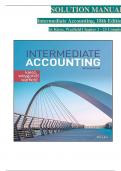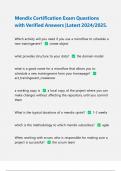Exam (elaborations)
Test Bank for Intermediate Accounting 18th Edition by Kieso, Weygandt and Warfield, ISBN: 9781119790976, All 23 Chapters Covered, Verified Latest Edition
Test Bank for Intermediate Accounting 18th Edition by Kieso, Weygandt and Warfield, ISBN: 9781119790976, All 23 Chapters Covered, Verified Latest Edition Test Bank for Intermediate Accounting 18th Edition by Kieso, Weygandt and Warfield, ISBN: 9781119790976, All 23 Chapters Covered, Verified Latest...
[Show more]




